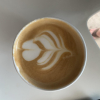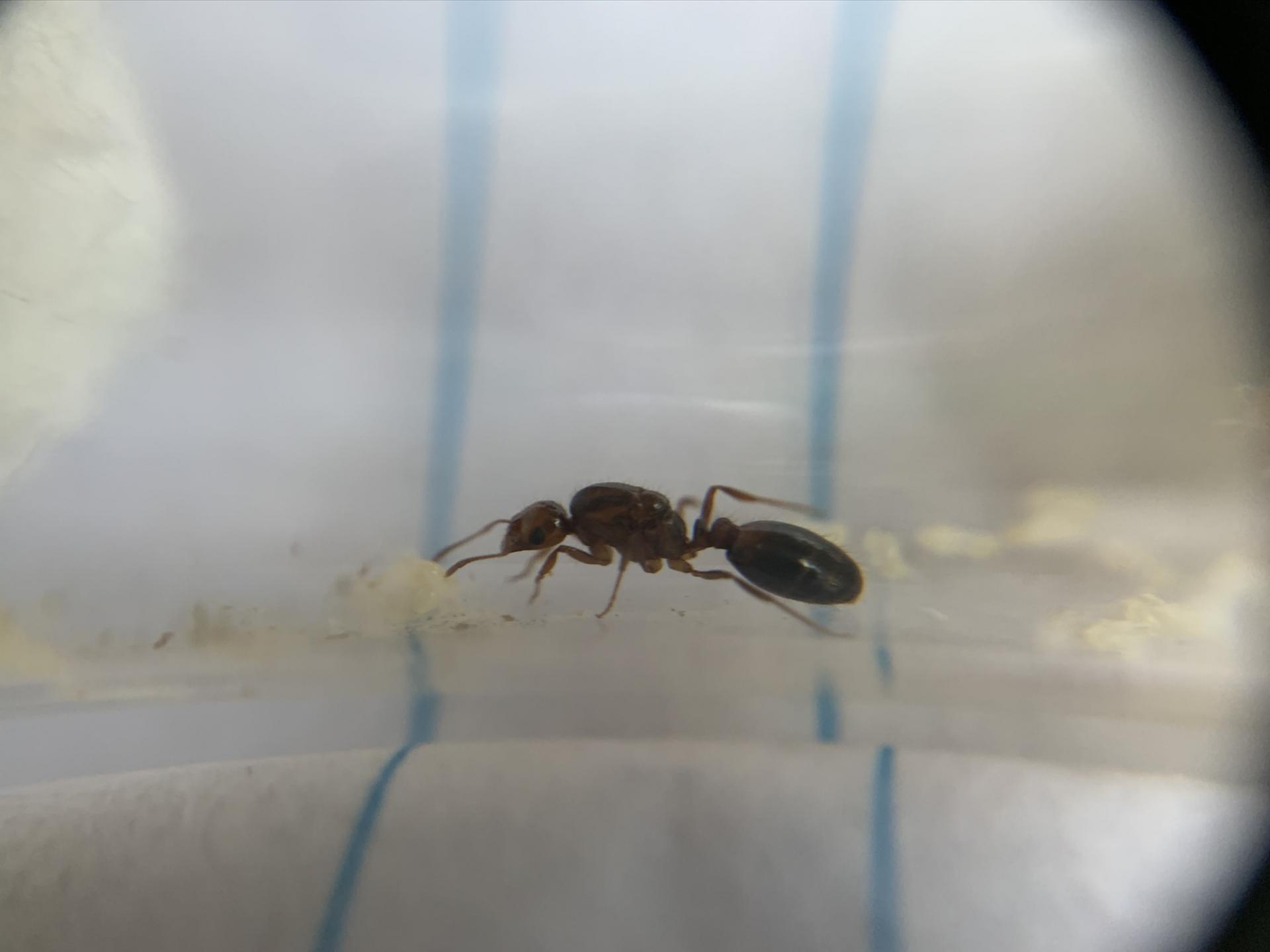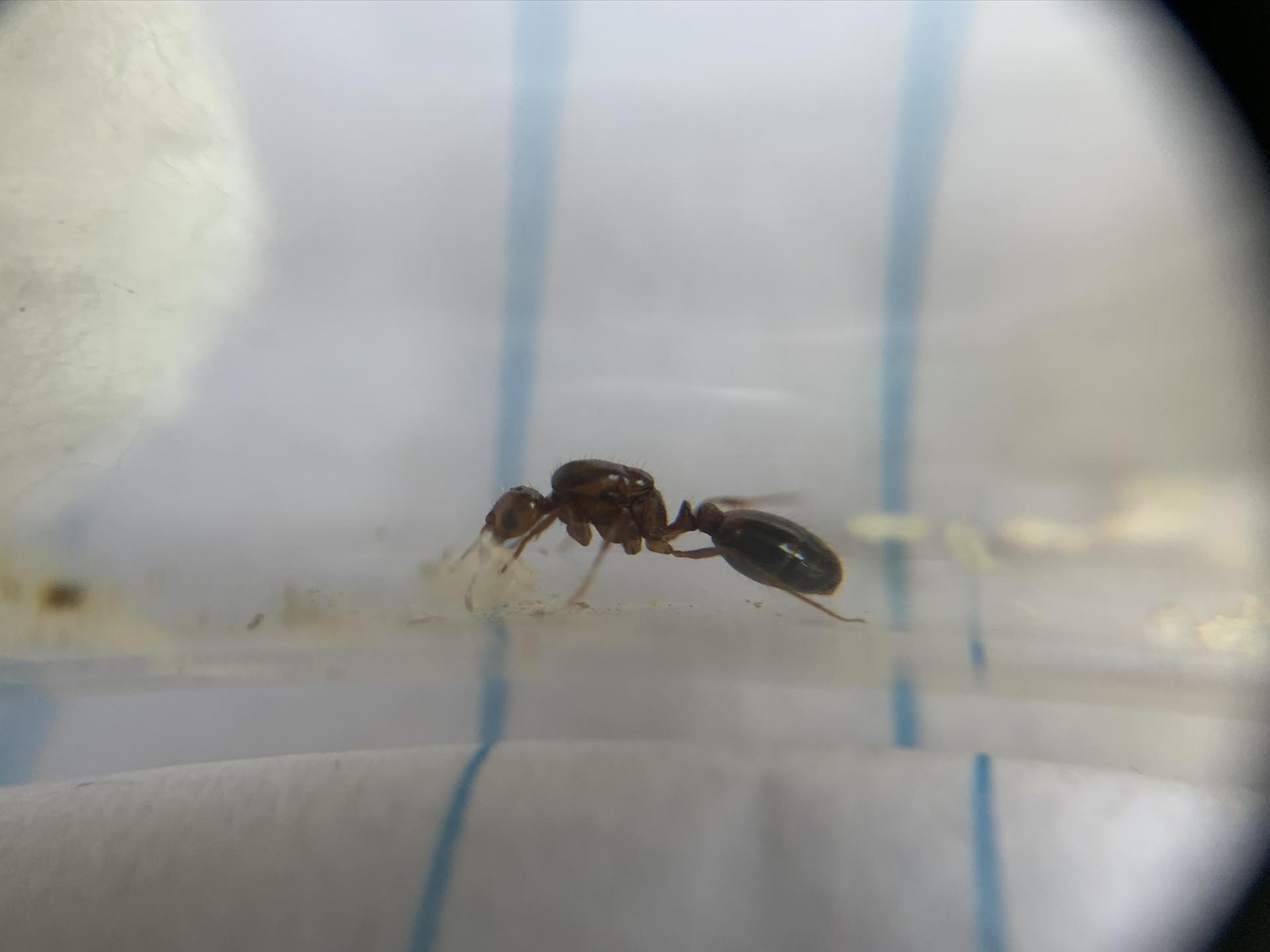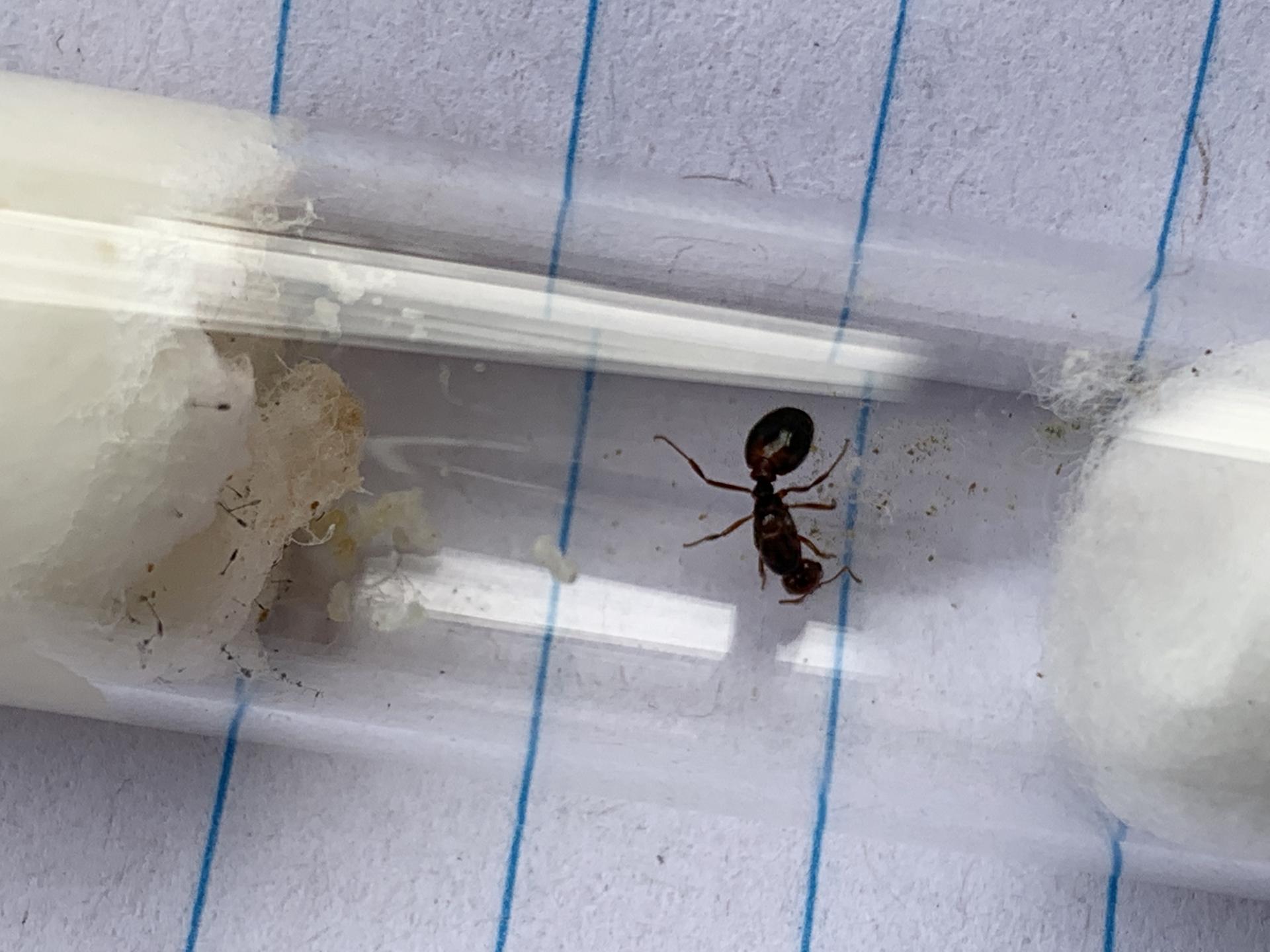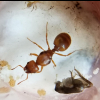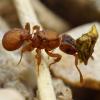1. Location (on a map) of collection: Jacksonville, FL
2. Date of collection: collected some time in late April or early May
3. Habitat of collection: urban, found crawling on sidewalk
4. Length (from head to gaster): 9mm
5. Color, hue, pattern and texture: very dark brown, almost black; hairy; also appears to have a lighter, reddish spot on dorsal surface of anterior end of gaster (barely visible in the photo - she was not in a photogenic mood!)
6. Distinguishing characteristics: she has a petiole and post petiole
7. Distinguishing behavior: laid a clump of eggs the day I found her; noticed larvae on June 13 and naked pupae on June 28
8. Nest description: N/A
9. Nuptial flight time and date: N/A
I'm thinking she's a Solenopsis, I just don't know how to ID to the species level.


